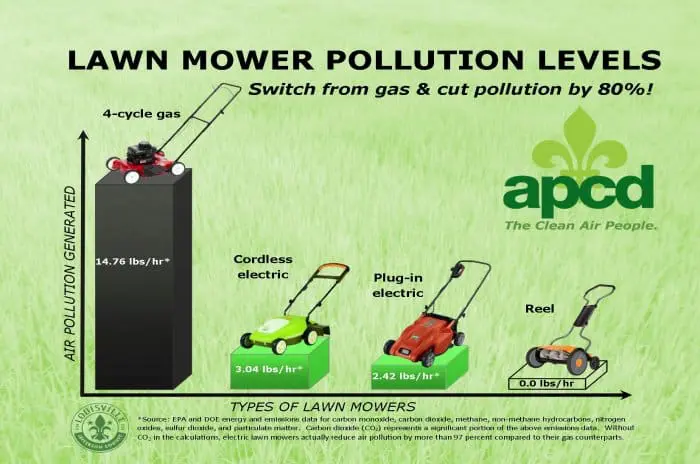The majority of landscaping in the United States is really just lawn care. There are approximately 40 million acres of lawn in the lower 48 states alone, accounting for 1.2% of the continental land mass.
What do we achieve from such colossal acreage? Well, lawns are the largest irrigated crop in the US, and Americans apply a staggering 80 million pounds of pesticides to lawns every year.

The Environmental Costs of Lawn Pesticides & Fertilizers
Culturally, we overlook this nonchalant, careless application of toxic pesticides as the norm, necessary to achieve the universal aesthetic of a flawless carpet of turf. We mostly fail to consider the production costs and supply chains of these chemicals – nearly all pesticides’ active ingredients are hydrocarbons, derived from petroleum.

To create synthetic fertilizers, natural gas is employed to heat and combine atmospheric nitrogen and hydrogen into ammonia; a forty pound bag of synthetic fertilizer requires the equivalent of 2.5 gallons of gasoline to produce. Nitrous oxide and methane, both greenhouse gases, are byproducts of synthetic fertilizer manufacturing.

We also fail to consider the downstream effects of their application. Pesticides leaching into ground water or being transported through runoff is a major concern. Fertilizers also easily wash onto driveways and down storm drains during storm events, where they are ultimately deposited into water bodies, creating eutrophication conditions (algal blooms and depletion of oxygen) which harm aquatic animals and plants. There is also concern that nitrate in synthetic fertilizers can leach into groundwater, because it is not bound to soil particles.

Petroleum & Emissions Associated with Lawn Care
Equally troublesome are the energy and air pollution costs associated with upkeeping a lawn. It’s estimated that Americans use 600 million gallons of gas to mow and trim their lawns every year! Two stroke engines in lawn mowers are a shocking 11 times more polluting than a new car.

Over application of fertilizers can also cause greenhouse gas emissions. A study by the National Academy of Sciences found that the excess fertilizer not used by plants gets converted to nitrous oxide by soil microbes, and is released into the atmosphere. Nitrous oxide is a GHG 300 times stronger than CO2; total NO emissions from fertilizers annually is the equivalent of 25 million tons of CO2! Leaf blowers, used to blow clippings and keep lawns leafless in fall, are just as troubling. Using a gas-powered leaf blower for thirty minutes emits the same amount of hydrocarbons as a car does driving 7700 miles at 30 mph!
Not to mention the real human health impacts from hearing high-decibel blowers. Catch up on the research on our previous blog post Why Leaf Blowers and Lawn Care Practices Are Hazardous to Our Health.
The Lawnscaping Alternative: Ecological Landscaping
It’s clear that lawns have a high cost: water, gas, the production of synthetic fertilizers and pesticides, the dangers associated with their runoff, and the emissions resulting from lawn care. On the flip side, every square foot of lawn is an opportunity to reclaim and design a landscape that positively impacts the local environment.

As landscape ecologists and landscape designers, we are always *strongly* encouraging our clients to reduce their lawn area in favor of native gardens and ground cover. Think about what you really use your lawn for, it and devote an appropriate portion of property for lawn; let the rest go. Try to envision the creativity and personality your property can have when it stops being just a lawn.
With every lawn area converted to a garden you are:
- Creating essential habitat for endangered birds and pollinators
- Sequestering carbon
- Reducing water use
- Reducing petroleum use
- Enriching the soil and preventing erosion
- Purifying and infiltrating stormwater
There’s also the potential to grow your own food, herbs, and cutting flowers, turning static lawn into a productive space. Consider also, the mental health benefits of spending time in a vibrant, ever-evolving garden.

Learn more about the principals of Natural, Ecological Landscaping in Fairfield & Westchester County on our previous blog post.
We recently received this note from a client on their new pollinator garden:
Jay, I can’t thank you enough! We are truly enjoying our garden oasis!! It is so amazing seeing the changes even in just a few weeks and all the daily visitors. And the kids are loving it. Thanks again.

Transforming lawn into a garden instantly creates a learning opportunity for the whole family. Educate yourself and your family on soil microbes, pollinators, plant life cycles, and bird behavior – and watch the phenomenon unfold in your own garden!
For inspiration on lawn-replacement projects, check out our previous blog posts:
Landscape Design in Fairfield County: Front Yard Pollinator Garden
Creating Bird & Pollinator Habitat At Home
Front Yard Native Garden & Custom Bluestone Walkway
Designing an Organic Pollinator Garden: Tips from a Landscape Ecologist
Lawn Removal Front Yard Zen Garden
—
Contact Us or call about your ecological landscape design project!
Green Jay Landscape Design
914-516-6570